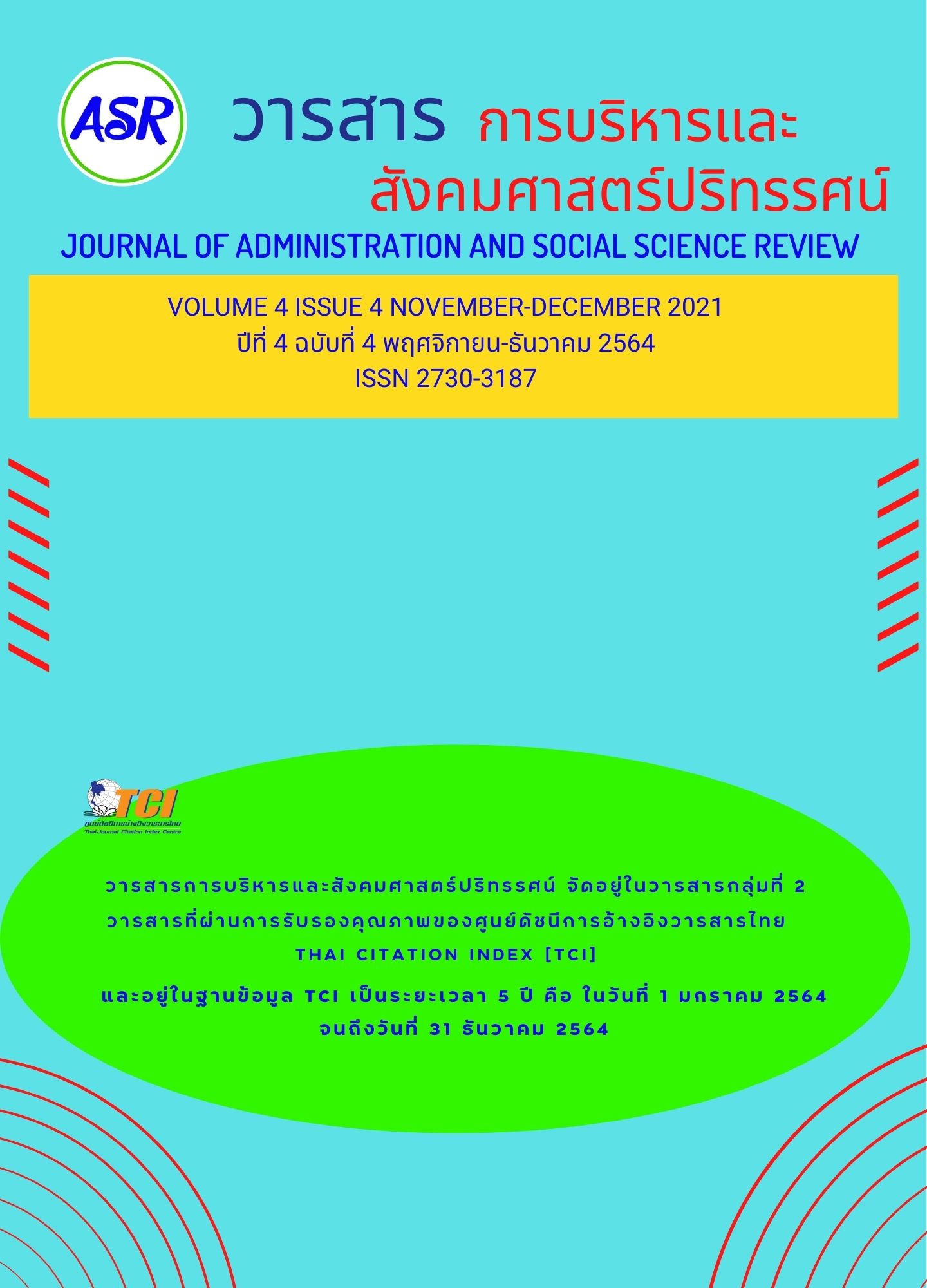Structural Equation Modeling of Adaptive behavior of Myanmar Migrant Labour Volunteers in Samut Sakhon Province to the Covid-19 Pandemic
Keywords:
Migrant Labour Volunteers, Adaptive Behavior, Structural Equation ModelingAbstract
This research article aims to test a structural equation modeling of Myanmar Migrant Labour Volunteers’ adaptive behaviors in the COVID-19 situation through the cause variables: risk perceptions, coping appraisal, and social supports. A sample is a group of 240 migrant volunteers from the Labour Rights Promotion Network Foundation. An instrument of quantitative questionnaire was used for collecting data; the structural equation modeling of the migrant labour volunteers’ adaptive behavior was analyzed; and the consistency of direct effects, fit model and empirical data was verified with measurements of Chi-Square, RMSEA, RMR and CFI. Results showed that the structural equation modeling of the migrant labour volunteers’ performance had the goodness of fit in to empirical data (χ2= 52.497, df = 43, p = .152, RMSEA = .030, RMR = .006, CFI = .995, GFI = .965, AGFI = .936), and variables in the adjusted model accounted for 71.1 percent of the adaptive behaviors. The structural equation modeling had an analytical significance with the values: risk perception (0.15), coping appraisal (-0.20), and social support (0.93). The policy recommendations for implementation from the research is that the government and migrant worker networks should support them in adaptive behaviors to for the pandemic situation: promoting risk perception and social support.



